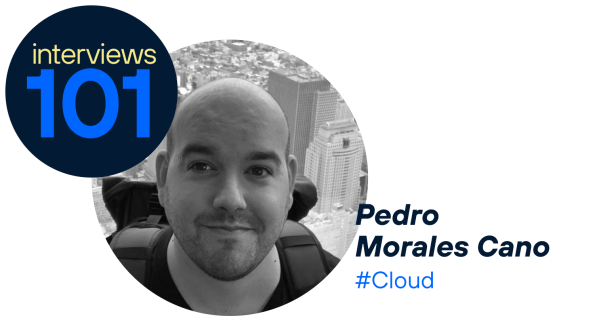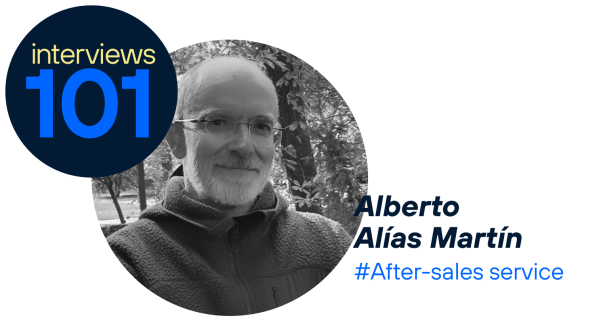What does your job at Telefónica involve?
I currently work in Key Account Marketing, in the so-called Pricing Office. My main role is to promote our products among the Key Account and Medium Enterprise networks, as well as with the end customer.
I run marketing campaigns aimed at these two audiences, as well as communication activities and events with our sales networks and end customers.
At the moment the products and services I am most focused on are SRM (Mobile Network Security) as well as Telefónica’s Workplace Móvil, recent bets that are beginning to consolidate.
What does digital marketing consist of?
Digital marketing is the way in which companies, brands and even individuals connect with their audience mainly through the internet.
The aim is to take advantage of platforms such as social networks, websites, emails and search engines (mainly Google) to reach the right people or the companies’ interlocutors (in the case of the area in which I work), and even our commercial networks, at the right time and with a defined purpose.
Unlike traditional advertising, digital marketing allows you to interact directly with the audience and adapt messages almost in real time, making it a very powerful and effective tool.
What are the characteristics of digital marketing?
One of the main characteristics of digital marketing is its great capacity for segmentation and measurement. It allows us to target very specific audiences based on their interests, age, location and online behaviour, among other factors, making each marketing and communication action much more effective.
In addition, these types of strategies allow us to measure practically everything: from how many people saw an advertisement to how many clicked on a publication or bought a product.
Of course, digital marketing is a dynamic and constantly evolving environment, which means we always have to be on the lookout for new trends and tools, because what works today can become obsolete in just a few months.
For example, if we want to sell a Telefónica product aimed at large companies with specific technological needs in a particular sector, we can design specific campaigns.
Firstly, aimed at the sales representatives who manage this type of client, and then at the key contacts in these companies, always complying with current data protection regulations, an aspect that we cannot ignore.
What are the main strategies?
There are many strategies in digital marketing, each designed for specific objectives. One of the most effective is still SEO, which improves the positioning of a web page in search engines such as Google. Although this strategy is considered ‘classic,’ it is still profitable and effective.
Another key strategy is content marketing, which consists of creating valuable information to attract potential customers. We also use paid campaigns on social networks and search engines, as well as email marketing, which is still a fundamental tool for maintaining contact with customers.
In the Key Accounts area, one of the most effective strategies is to focus on sales networks, since sales representatives are the best prescribers and have in-depth knowledge of our customers and interlocutors.
For this reason, we design campaigns with attractive content on platforms such as Workplace (a closed, corporate social network), reinforced with highly segmented email marketing for each salesperson according to the campaign.
How important is audiovisual content in digital marketing?
Audiovisual content plays a fundamental role in digital marketing, as we live in an eminently visual era. In recent years, its use has multiplied exponentially. Personally, I no longer conceive of a campaign without some kind of audiovisual support to accompany it.
The proliferation of audiovisual content has also been driven by the democratisation of its production. Nowadays, with affordable tools such as a mobile phone, a spotlight and a microphone, it is possible to create quality content that previously required a considerable investment.
In my case, I self-produce a large part of the content for Telefónica, which allows me to be very agile throughout the whole process: from the design and approval of the concept, to the production, editing and delivery of the final result. Nowadays, I can design a campaign and have a two-minute audiovisual piece ready in less than a week, something unthinkable just five years ago.
This is not to say that I don’t believe in high-profile productions or massive campaigns with bigger budgets. It’s important to point out that, depending on your objective, need and urgency, you now have very affordable tools that were previously impossible to access.
And I say this because democratisation also implies a ‘flood’ and creation of mediocre content, and that can be counterproductive. I see many campaigns and viral actions (or those that try to be viral) that are very careless and even damage the image of the brand or the product they are trying to promote, and this is important.
In my humble opinion, we have to be very demanding with the results and have previous and in-depth knowledge of marketing, communication and image if we want to be effective in our campaigns (no matter how ‘economical’ they may be).
What are the main differences between digital and traditional marketing?
The most obvious difference between digital and traditional marketing is immediacy, cost reduction and the capacity for interaction.
While traditional marketing (such as TV or magazine adverts) is one-way — the brand speaks and the public listens — digital marketing is two-way and participative, allowing for comments to be received, strategies to be adjusted in real time and a closer relationship to be established with the audience.
Another key difference is the accessibility and flexibility of digital marketing, as it allows any business, large or small, to have an online presence without the need for large initial investments.
It also offers the possibility of measuring the impact of each action with precise data, something that is much more difficult to achieve in traditional advertising.
Who is the person working at Telefónica that you would nominate for this interview that you consider to be excellent in their work?
Over the last few years I have worked side by side with Leticia Manero, a very talented young woman who has just been promoted within Telefónica Empresas and who I think is not only excellent at her job, but also has a lot of potential to fulfil in our company.












